echozeta
65 posts
Latest Posts by echozeta

“It’s just so cool that [five] women were the best people to call.” - team member Emma Liu.












Timoclea (4th century BCE): the Woman Who Threw Her Rapist in a Well
This was not the post that was scheduled. But it was one that spoke to the moment. If you’re in the US, please vote.
Full post, with footnotes and whatnot, here. Books here. Patreon here. Art notes after the cut.
Keep reading











Art G.Shvecova (Design graphics - Purple_clouds_230918)
Are you looking forward to a future where we can’t even buy a kitchen/work/craft knife as an adult and have it delivered to your own home? Thanks UK bureaucrats for continuing to babify the nation. Good luck if you live rurally, are disabled, agraphobic, work long hours or can’t for any reason make it in person to a goverment santioned store.
https://petition.parliament.uk/petitions/222776
Ok but as a dysphoric trans man the whole ‘you need dysphoria to be trans’ actually baffles me because even tho I’ve always has crippling dysphoria, it didn’t actually help me figure out my gender at all. I usually dismissed my dysphoria as ‘internalized misogyny’ or just not being feminine enough, which actually just caused me worse dysphoria.
You know what made me figure out that I’m trans though? Gender euphoria. The minute I got called a ‘sir’ is the moment that I realized, “shit this feels right.” And at that point I realized that I could no longer deny the fact that I’m not a woman and that I couldn’t keep living as one.
Here’s a hot take: maybe being trans isn’t so much about how uncomfortable you can be in your AGAB, but rather how much more comfortable you can be.
Female, 13 - 18, large eyes, small nose, square face, small mouth, standard weight, East Asian
....
Anime protaganist it is then :P
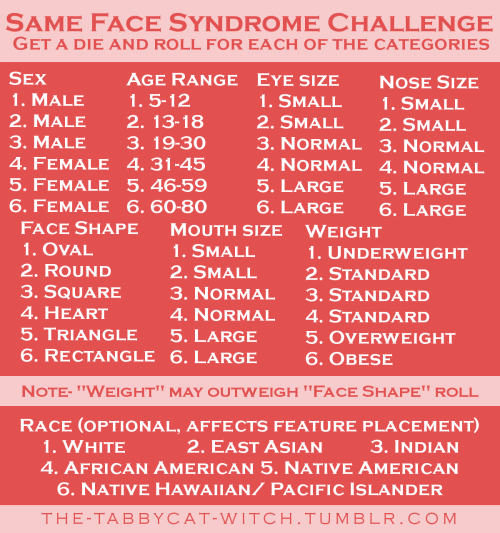
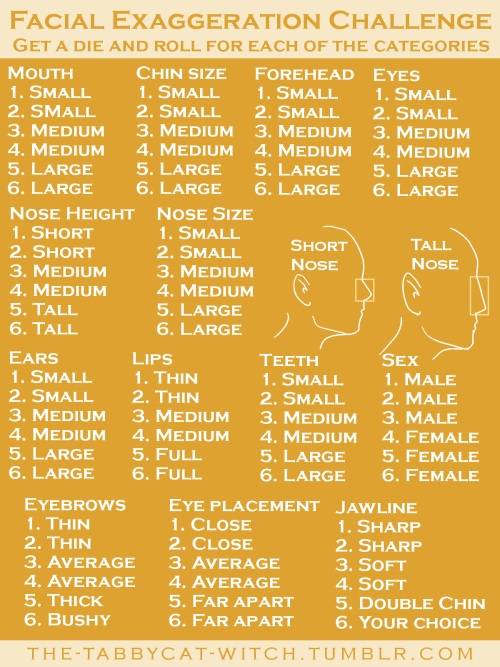
Hey, guys! I’ve noticed that there are a lot of artists who struggle with “same face syndrome,” or the tendency to draw all their characters with the same face. To help you combat this, I’ve created two different challenges!
The first (pink) one is mainly geared towards artists who are struggling with same face syndrome and want to start branching out. It covers topics that a lot of artists struggle with when drawing faces, such as age, weight, and face shapes. It’s not super specific, so you still have some wiggle room.
The second (yellow) one is a bit harder and is mainly geared towards artists who want to really challenge themselves to diversify their faces. Personally, I think this one’s the most fun to work with despite it being more difficult. Chances are with this one, you’re not going to be drawing a whole bunch of beautiful people. You don’t have to roll for every option on this one either. A certain combination of rolls from 10/13 of the options may give you a great character idea, and that’s great!
I hope you guys enjoy these! I’d love for you to send me your drawings if you do one (or both) of them.

RECON is a queer, crowdfunded web series dramedy about a group of queer college freshmen and their attempts to balance their personal lives and relationships – while training to be spies. Set at the mysterious, ancient Academy, the show follows Ava, a skilled hacker from the Midwest who’s finally able to come out and make friends at her new school. While she’s able to make friends quickly, everything falls apart when she finds out that her entire life is being recorded and posted online in neatly edited, five- to ten-minute episodes.





I’ve wanted to do this for a really long time, but after finishing the art institute I finally got the courage to do it! And also because I’m down on my luck because unemployment…
Will draw:
OCs
Fanart
Couples
Won’t draw:
NSFW
Mecha
Furries
IMPORTANT
(+6$ per additional character)
Simple backgrounds are free. Normal ones are from 2 to 4$, depending on difficulty.
If you send me a message, let me know your request. References are welcome.
Payment via Paypal only.
EDIT: More details in this form. Please fill up the necessary info if interested.
Please contact me at kuromiya92@hotmail.com if interested.
And thanks for stopping by~

“I think [gender] doesn’t matter for your occupation. Any job that a man can do a woman can do also. Sometimes even better.“

*asexual laughter*




A tutorial I made about lighting per request of twitter, but I figured that y’all would like it too
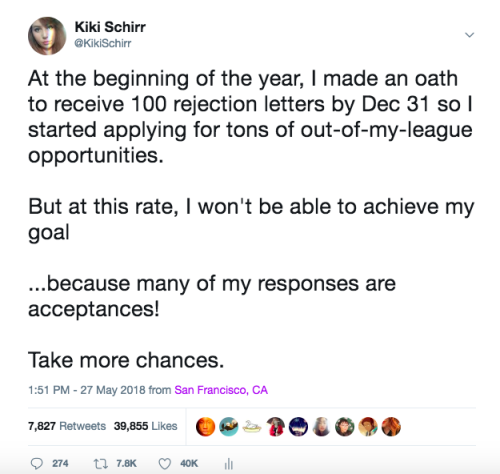
Today I discovered this writer’s tactic to face her fear of rejection and failure, and it’s honestly very inspiring?! This kinda rewired my brain and I feel everyone should read and think about it.
Read her short article here
Land is Sliding, Tell Us Where!
Summer in the northern hemisphere brings monsoon season, causing heavy rains and flooding that trigger landslides. Next time you see a landslide in the news, online, or in your neighborhood, submit it to our citizen science project Landslide Reporter to build the largest open global landslide catalog and help us and the public learn more about when and where they occur.
Rainfall is the most common cause of landslides.
After a storm, the soil and rock on a slope can become saturated with water and begin to slide downwards, posing a danger to people and destroying roads, houses and access to electricity and water supplies.

We have been monitoring rainfall from space for decades.
Orbiting the Earth right now, the Global Precipitation Measurement (GPM) mission is a group of 10 satellites that measure rain, snow, sleet and other precipitation worldwide every three hours. This data tells us where and when heavy rain is falling and if it could lead to disasters.

What can rainfall data tell us about landslides?
We’re using GPM data to understand where and when landslides are happening. A global landslide model uses information about the environment and rainfall to anticipate where landslides are likely to happen anytime around the world every three hours.

To improve the global landslide model and other landslide research, NASA is looking for citizen scientists like you!
If you find a landslide reported online or in your neighborhood, you can provide the event details in Landslide Reporter, our citizen science project.

Your detailed reports are added into an open global landslide inventory available at Landslide Viewer. We use citizen science contributions along with other landslide data to check our prediction model so we can have a better picture of how rainfall, slope steepness, forest cover, and geology can trigger a landslide.

Because the data is open, anyone can use the data for research or response.
When you report a landslide, you improve our collection of landslide data for everyone.
Help support landslide efforts worldwide by contributing to Landslide Reporter, and you can help inform decisions that could save lives and property today! Learn more about the project at https://landslides.nasa.gov. You can also follow the project on Twitter and Facebook.
Make sure to follow us on Tumblr for your regular dose of space: http://nasa.tumblr.com.

See also: Kakenya Ntaiya, who’s been working to end the practice through education.
Tools of the Trade: How Parker Solar Probe Will Study the Sun
Our Parker Solar Probe will get closer to the Sun than any spacecraft has ever gone – it will fly right through the Sun’s corona, part of the Sun’s atmosphere.

This spacecraft is full of cutting-edge technology, from its heat shield down to its guidance and control systems. It also carries four suites of advanced instruments designed to study the Sun in a multitude of ways.
1. Measuring particles
Two of Parker Solar Probe’s instrument suites are focused on measuring particles – electrons and ions – within the corona.
One of these particle-measuring instrument suites is SWEAP (Solar Wind Electrons Alphas and Protons). SWEAP counts the most common particles in the solar wind – the Sun’s constant outflow of material – and measures their properties, like velocity, density and temperature. Gathering this information about solar wind particles will help scientists better understand why the solar wind reaches supersonic speeds and exactly which part of the Sun the particles come from.

One instrument in the SWEAP suite is the Solar Probe Cup. Most of the instruments on Parker Solar Probe stay safe and cool in the shadow of the heat shield, but the Solar Probe Cup is one of the few that sticks out. That’s so it can capture and measure particles streaming straight out from the Sun, and it had to go through some intense testing to get ready for this position in the Sun’s incredibly hot corona.

Credit: Levi Hutmacher/Michigan Engineering
The ISʘIS suite (pronounced EE-sis, and including the symbol for the Sun in its acronym) also measures particles. ISʘIS is short for Integrated Science Investigation of the Sun, and this instrument suite measures particles that move faster – and therefore have more energy – than the solar wind.
These measurements will help scientists understand these particles’ lifecycles – where they came from, how they got to be traveling so fast (these particles can reach speeds more than half the speed of light!) and what path they take as they travel away from the Sun and into interplanetary space.

2. Taking pictures – but not of the Sun’s surface.
WISPR (Wide-Field Imager for Parker Solar Probe) has the only two cameras on Parker Solar Probe – but they’re not pointed directly at the Sun. Instead, WISPR looks out the side of the spacecraft, in the direction it’s traveling, looking at the space Parker Solar Probe is about to fly through. From that vantage point, WISPR captures images of structures within the corona like coronal mass ejections, or CMEs. CMEs are clouds of solar material that occasionally explode from the Sun at millions of miles per hour. Because this solar material is magnetized, CMEs can trigger geomagnetic storms when they reach Earth – which, in turn, can cause effects like auroras and even, in extreme cases, power outages.

Right now, our observations of events like these come from satellites orbiting near Earth, so WISPR will give us a whole new perspective. And, scientists will be able to combine WISPR’s images with Parker Solar Probe’s direct particle measurements to get a better idea of how these structures change as they travel.

3. Studying electric & magnetic fields
The FIELDS instrument suite is appropriately named: It’s what scientists will use to study the electric and magnetic fields in the corona.
Electric and magnetic fields are key to understanding what happens, not only on the Sun, but throughout space, because they the primary driver accelerating charged particles. In particular, a process called magnetic reconnection – when magnetic field lines explosively realign, sending particles rocketing away at incredible speeds – is thought to drive solar explosions, as well as space weather effects on Earth, like the aurora.

FIELDS measures electric and magnetic field at high time resolution, meaning it takes lots of measurements in a short amount of time, to track these processes and shed some light on the mechanics underlying the Sun’s behavior. FIELDS’ measurements are precisely synced up with those of the SWEAP suite (one of the sets of instruments studying particles) so that scientists can match up the immediate effects that electric and magnetic fields have on the material of the solar wind.

Parker Solar Probe launches summer 2018 on its mission to study the Sun. Keep up with the latest on the mission at nasa.gov/solarprobe or follow us on Twitter and Facebook.
Make sure to follow us on Tumblr for your regular dose of space: http://nasa.tumblr.com.
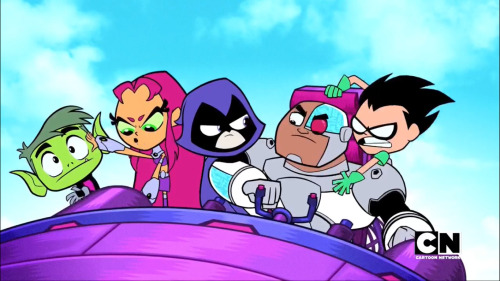




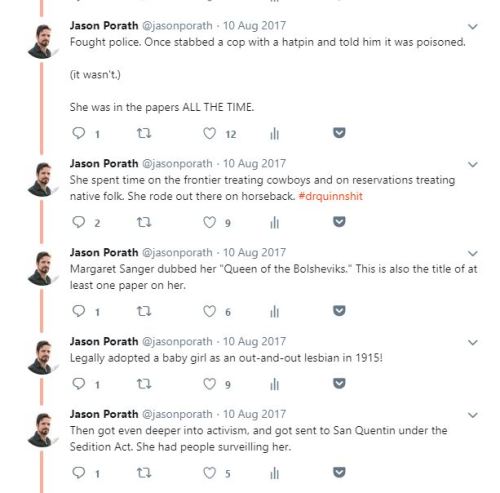

Marie Equi died on this day in 1952.
When I wrote that initial tweetstorm, I hadn’t finished all my research into her. It’s important to not leave out: Marie Equi was physically abusive and she almost certainly either cheated on her wife or went outside the bounds of their non-monogamous agreements. She was a deeply difficult, very flawed, very human person and one shouldn’t lose sight of that when talking about her.
And yes, I cover her in my second book.


And the painter they chose was Artemisia Gentileschi (1593-1653), whose first art show wasn’t held til 1991. Famously, she painted herself as Judith, beheading her rapist (as Holofernes). She also took her rapist to court and won - in the 1600s!
I cover her in book one. Here she is, painting her famous rendition of Judith and Holofernes.


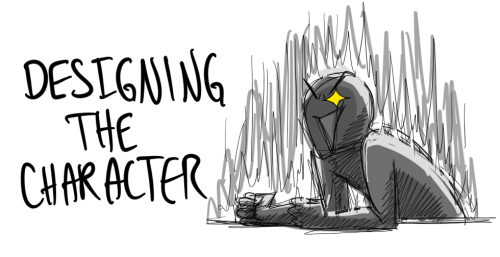



the suffering never ends
Can I talk for a moment about visual storytelling, cause, I feel like it’s something that a lot of adaptations forget about in lieu of trying to replicate their source material.
It’s a problem you see most often in anime derived from manga or light novels, but it’s also present in movies based on YA novels, and you gotta know what I’m talking about, start on black, opening narration, fade in as the main character explains the world and environment. This works in a book since the reader can’t see anything, they need the specifics of the world explained, but it feels like the movies are just like “well it worked for the book, it’ll work for us right?
I’d say it’s worse in anime, where characters will go on long internal soliloquies trying to explain their thought processes and complex emotions, which again, works for the manga, in a manga movement is very expensive, every single motion requires it’s own panel, which takes up the artist’s time, printed space, and a moment in the narrative, so it’s important to only show what absolutely needs to be shown. But animation is different, it’s all movement and the details are what sells it more than the dialogue.
The reason I wanted to make this post is because of one scene in One Punch Man that perfectly exemplifies how to translate a written thought process into visual storytelling. After getting punched to the moon (err, spoilers), Saitama has this thought process

and it’d be easy to translate that entirely literally in the anime, Saitama crouches, has an internal monologue as he tries to figure out how much force he needs to put into his jump, and then he launches. Instead though, the scene is done completely silently, to sell the fact that he’s in space, but the thought process isn’t removed, it’s just show visually.
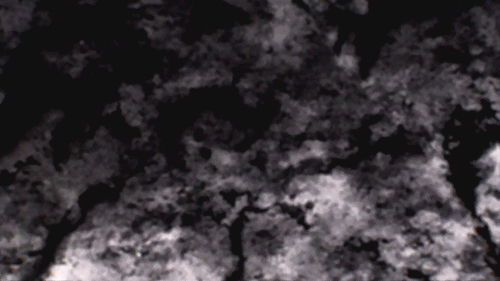
He throws a bit of moon rock to gauge the moon’s gravity, then launches, it’s a much more thoughtful approach to the scene and the audience’s ability to interpret visual information.
I just, really wish more adaptations realized the inherent strength of the visual medium instead of relying entirely on the source material’s structure and reliance on its own medium.
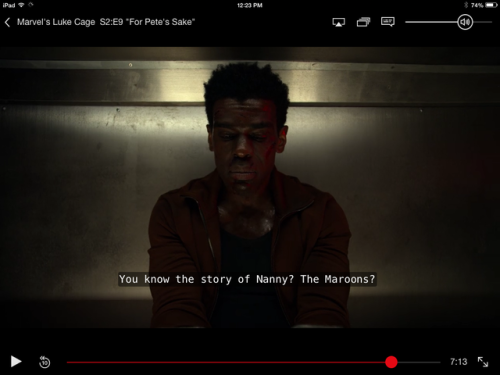
Holy crap - why, YES, Luke Cage, yes I do!
Nanny of the Maroons, as the show goes on to say, was a leader of a city of formerly-enslaved Africans in Jamaica. They regularly raided plantations to liberate others. Rumors swirled that she was royalty, but her origins are a bit unclear - the show says she was Asante, but I think that’s still uncertain?

She beat the hell out of the British for years, and was reputed to have magic powers. She fed her people with quick-growing pumpkins, made the British ill with her herbalism, and camouflaged warriors so well, British soldiers would hang their coats on them, thinking them trees. Said soldiers would then decapitate the British and vanish into the forest. She could supposedly catch bullets with her bare hands.
To this day, the site of old Nanny Town is a place where unwelcome visitors reputedly go missing.
And yes, I cover her in my first book.

(she’s so cool! so glad her story is suffusing its way into pop culture! she fits in perfectly with the storyline they have going in Luke Cage.)
10 Things: Mysterious 'Oumuamua
The interstellar object ‘Oumuamua perplexed scientists in October 2017 as it whipped past Earth at an unusually high speed. This mysterious visitor is the first object ever seen in our solar system that is known to have originated elsewhere. Here are five things we know and five things we don’t know about the first confirmed interstellar object to pass through our solar system.
1. We know it’s not from around here.
The object known as 1I/2017 U1 (and nicknamed ‘Oumuamua) was traveling too fast (196,000 mph, that’s 54 miles per second or 87.3 kilometers per second) to have originated in our solar system. Comets and asteroids from within our solar system move at a slower speed, typically an average of 12 miles per second (19 kilometers per second) . In non-technical terms, 'Oumuamua is an “interstellar vagabond.”

Artist impression of the interstellar object ‘Oumuamua. Credit: ESA/Hubble, NASA, ESO, M. Kornmesser
2. We’re not sure where it came from.
'Oumuamua entered our solar system from the rough direction of the constellation Lyra, but it’s impossible to tell where it originally came from. Thousands of years ago, when 'Oumuamua started to wander from its parent planetary system, the stars were in a different position so it’s impossible to pinpoint its point of origin. It could have been wandering the galaxy for billions of years.

3. We know it’s out of here.
'Oumuamua is headed back out of our solar system and won’t be coming back. It’s rapidly headed in the direction of the constellation Pegasus and will cross the orbit of Neptune in about four years and cover one light year’s distance in about 11,000 years.
4. We don’t really know what it looks like.
We’ve only seen it as a speck of light through a telescope (it is far away and less than half a mile in length), but its unique rotation leads us to believe that it’s elongated like a cigar, about 10 times longer than it is wide. We can’t see it anymore. Artist’s concepts are the best guesses at what it might look like.
5. We know it got a little speed boost.
A rapid response observing campaign allowed us to watch as 'Oumuamua got an unexpected boost in speed. The acceleration slightly changed its course from earlier predictions.
“This additional subtle force on ′Oumuamua likely is caused by jets of gaseous material expelled from its surface,” said Davide Farnocchia of the Center for Near Earth Object Studies (CNEOS) at NASA’s Jet Propulsion Laboratory. “This same kind of outgassing affects the motion of many comets in our solar system.”
6. We know it’s tumbling.
Unusual variations in the comet’s brightness suggest it is rotating on more than one axis.

This illustration shows ‘Oumuamua racing toward the outskirts of our solar system. As the complex rotation of the object makes it difficult to determine the exact shape, there are many models of what it could look like. Credits: NASA/ESA/STScI
7. We don’t know what it’s made of.
Comets in our solar system kick off lots of dust and gas when they get close to the Sun, but 'Oumuamua did not, which led observers to consider defining it as an asteroid.
Karen Meech, an astronomer at the University of Hawaii’s Institute of Astronomy, said small dust grains, present on the surface of most comets, may have eroded away during ′Oumuamua’s long journey through interstellar space. “The more we study ′Oumuamua, the more exciting it gets.” she said. It could be giving off gases that are harder to see than dust, but it’s impossible to know at this point.
8. We knew to expect it.
Just not when. The discovery of an interstellar object has been anticipated for decades. The space between the stars probably has billions and billions of asteroids and comets roaming around independently. Scientists understood that inevitably, some of these small bodies would enter our own solar system. This interstellar visit by ‘Oumuamua reinforces our models of how planetary systems form.

9. We don’t know what it’s doing now.
After January 2018, ’Oumuamua was no longer visible to telescopes, even in space. But scientists continue to analyze the data gathered during the international observing campaign and crack open more mysteries about this unique interstellar visitor.
10. We know there’s a good chance we’ll see another one…eventually.
Because ′Oumuamua is the first interstellar object ever observed in our solar system, researchers caution that it’s difficult to draw general conclusions about this newly-discovered class of celestial bodies. Observations point to the possibility that other star systems regularly eject small comet-like objects and there should be more of them drifting among the stars. Future ground- and space-based surveys could detect more of these interstellar vagabonds, providing a larger sample for scientists to analyze. Adds, Karen Meech, an astronomer at the University of Hawaii’s Institute of Astronomy: “I can hardly wait for the next interstellar object!“
Make sure to follow us on Tumblr for your regular dose of space: http://nasa.tumblr.com.




Two years ago, I wrote about Micaela Almonester, a tough-as-nails woman from the 1800s who survived an incredibly abusive relationship (her father-in-law shot her multiple times!) to build some of the great architecture of New Orleans. Today I got to see it in person for the first time. Her initials are still in the latticework.
http://www.rejectedprincesses.com/princesses/micaela-almonester














Sarah Biffin (1784-1850): The Artist Who Painted With Her Mouth
Full entry here. Patreon here. Books here – yes, the second book is out!.
And if you’re around HeroesCon in North Carolina this weekend, I’ll be there at Artist Alley table AA-1924! Come say hi!
Art notes after the cut.
Keep reading


Interesting study that highlights some important simularities and differences of the British Muslim community.
P.S. I didn’t add that tag